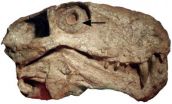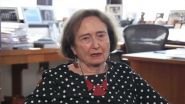(Press-News.org) Reducing sedentary activity appears to lengthen telomeres, which sit on the end of chromosomes, the DNA storage units in each cell, the findings show.
Telomeres are important because they stop chromosomes from 'fraying' or clumping together and 'scrambling' the genetic codes they contain, performing a role similar to the plastic tips on the end of shoelaces, to which they have been likened.
Longevity and a healthy lifestyle have been linked to telomere length, but whether physical activity can make any difference, is not clear.
The researchers therefore analysed the length of chromosomal telomeres in the blood cells of 49 predominantly sedentary and overweight people in their late 60s, on two separate occasions, six months apart.
All 49 participants had been part of a previously reported clinical trial in which half of them had been randomly assigned to a tailored exercise programme over a period of six months, and half had been left to their own devices.
Levels of physical activity were assessed using a seven day diary and a pedometer to measure the number of footsteps taken every day, while the amount of time spent sitting down each day was gleaned through a validated questionnaire.
The time spent exercising as well as the number of steps taken daily increased significantly in the group following the exercise programme, while the amount of time spent seated fell in both groups.
Various risk factors for heart disease and stroke also improved in both groups, particularly those on the exercise programme, who also lost a great deal more weight than their counterparts left to their own devices.
But increases in physical activity seemed to have less of an impact than reductions in sitting time, the findings showed.
The number of daily steps taken was not associated with changes in telomere length, while an increase in moderate intensity physical activity was linked to a shortening in telomere length, although this was not significant.
But a reduction in the amount of time spent sitting down in the group on the exercise programme was significantly associated with telomere lengthening in blood cells.
"In many countries formal exercise may be increasing, but at the same time people spend more time sitting," write the researchers. "There is growing concern that not only low physical activity...but probably also sitting and sedentary behaviour is an important and new health hazard of our time."
They admit that their study is small, and caution that it needs to be repeated in other larger groups, and in other tissues, such as skeletal muscle and fat cells.
But they say that their findings corroborate other research on the impact of time spent sitting down, and conclude: "We hypothesise that a reduction in sitting hours is of greater importance than an increase in exercise time for elderly risk individuals."
INFORMATION: END
Curb sitting time to protect aging DNA and possibly extend lifespan
Less time spent seated linked to lengthening of telomeres which cap chromosomes in cells
2014-09-04
ELSE PRESS RELEASES FROM THIS DATE:
The Lancet Diabetes & Endocrinology: Global epidemic of diabetes threatens to jeopardise further progress in tuberculosis control
2014-09-04
The rapid increase in rates of type 2 diabetes* in low- and middle-income countries where tuberculosis (TB) is endemic could hamper global efforts to control and eliminate TB, according to a new three-part Series about TB and diabetes, published in The Lancet Diabetes & Endocrinology.
The Series indicates that 15% of adult TB cases worldwide are already attributable to diabetes. These diabetes-associated cases correspond to over 1 million cases a year, with more than 40% occurring in India and China alone. If diabetes rates continue to rise out of control, the present ...
Ancient mammal relatives were active at night 100 million years before origin of mammals
2014-09-04
Most living mammals are active at night (or nocturnal), and many other mammal species are active during twilight conditions. It has long been thought that the transition to nocturnality occurred at about the same time as mammals evolved, around 200 million years ago. This thinking was based on on features such as the large brains of mammals (good for processing information from senses like hearing, touch, and smell) and the details of light-sensitive chemicals in the eyes of mammals.
It turns out that nocturnal activity might have a much older origin among ancient mammal ...
E-cigarettes may promote illicit drug use and addiction
2014-09-04
VIDEO:
Columbia researchers discuss how e-cigarettes may promote illicit drug use and addiction.
Click here for more information.
NEW YORK, NY (September 3, 2014)—Like conventional cigarettes, electronic cigarettes (or
e-cigarettes) may function as a "gateway drug"—a drug that lowers the threshold for addiction to
other substances, such as marijuana and cocaine—according to the 120th Shattuck lecture, presented to the Massachusetts Medical Society by Columbia researchers ...
Blood test for 'nicked' protein predicts prostate cancer treatment response
2014-09-04
Prostate cancer patients whose tumors contain a shortened protein called AR-V7, which can be detected in the blood, are less likely to respond to two widely used drugs for metastatic prostate cancer, according to results of a study led by researchers at the Johns Hopkins Kimmel Cancer Center. If large-scale studies validate the findings, the investigators say men with detectable blood levels of AR-V7 should avoid these two drugs and instead take other medicines to treat their prostate cancer. A report on the work is described online Sept. 3 in the New England Journal of ...
Airline pilots, cabin crews have higher incidence of melanoma
2014-09-03
Bottom Line: Airline pilots and cabin crews appear to have twice the incidence of melanoma as the general population.
Author: Martina Sanlorenzo, M.D., of the University of California, San Francisco, and colleagues.
Background: Melanoma is a common cancer in the United States; in 2014, 76,100 people will be diagnosed with the skin cancer and 9,710 people will die. Several studies have suggested a higher incidence of melanoma in pilots and flight crew. Flight-based workers are thought to have a greater occupational hazard risk of melanoma because of increased altitude-related ...
Obsessive compulsive disorder diagnosis linked to higher rates of schizophrenia
2014-09-03
Bottom Line: A diagnosis of obsessive-compulsive disorder (OCD) appears to be associated with higher rates of schizophrenia and schizophrenia spectrum disorders.
Authors: Sandra M. Meier, Ph.D., of Aarhus University, Denmark, and colleagues.
Background: OCD and schizophrenia are distinct and infrequently overlapping disorders. But some studies have suggested higher rates of co-existing illness with the two disorders in patients.
How the Study Was Conducted: The authors assessed the potential relationship between the two disorders using data from Danish registers. ...
Genetic 'hotspot' linked to endometrial cancer aggressiveness
2014-09-03
Parents of twins often tell them apart through subtle differences such as facial expression, moles, voice tone and gait. Similarly, physicians treating women with endometrial cancer must be able to distinguish between different versions of this disease form that, on the surface, appear the same.
With endometrial cancer, the most common gynecological cancer in the western world and the fourth most prevalent in the U.S., it can literally be a matter of life and death. Mortality rates from this cancer have nearly tripled in the last 25 years and are thought to be attributed ...
Can sleep loss affect your brain size?
2014-09-03
MINNEAPOLIS – Sleep difficulties may be linked to faster rates of decline in brain volume, according to a study published in the September 3, 2014, online issue of Neurology®, the medical journal of the American Academy of Neurology.
Sleep has been proposed to be "the brain's housekeeper", serving to repair and restore the brain.
The study included 147 adults 20 and 84 years old. Researchers examined the link between sleep difficulties, such as having trouble falling asleep or staying asleep at night, and brain volume.
All participants underwent two MRI brain scans, ...
Polyester clothes stink after exercise; cotton, not so much
2014-09-03
Polyester clothes smell worse than cotton, following intensive exercise by their wearers, because bacteria that cause odor grow better on polyester, according to research published ahead of print in the journal Applied and Environmental Microbiology.
In the study, the investigators collected t-shirts from 26 healthy individuals following an intensive, hour-long bicycle spinning session, and incubated the shirts for 28 hours before having them inspected by a trained odor panel. The researchers also investigated the taxonomy of the bacteria on the shirts, and in the axillaries. ...
NASA's HS3 hurricane mission and Terra satellite take on Tropical Storm Dolly
2014-09-03
NASA has Tropical Storm Dolly covered by satellite and the remotely piloted Global Hawk aircraft. Both captured data on Dolly before it made landfall in eastern Mexico.
The MODIS or Moderate Resolution Imaging Spectroradiometer instrument aboard NASA's Terra satellite took an image of Tropical Storms Norbert in the Eastern Pacific and Dolly in the Gulf of Mexico at 1:30 p.m. EDT on Sept. 2. The image showed Dolly is a much more organized storm than Norbert, and revealed Dolly's strongest, towering thunderstorms around the center of circulation. Norbert is close to the ...
LAST 30 PRESS RELEASES:
First Editorial of 2026: Resisting AI slop
Joint ground- and space-based observations reveal Saturn-mass rogue planet
Inheritable genetic variant offers protection against blood cancer risk and progression
Pigs settled Pacific islands alongside early human voyagers
A Coral reef’s daily pulse reshapes microbes in surrounding waters
EAST Tokamak experiments exceed plasma density limit, offering new approach to fusion ignition
Groundbreaking discovery reveals Africa’s oldest cremation pyre and complex ritual practices
First breathing ‘lung-on-chip’ developed using genetically identical cells
How people moved pigs across the Pacific
Interaction of climate change and human activity and its impact on plant diversity in Qinghai-Tibet plateau
From addressing uncertainty to national strategy: an interpretation of Professor Lim Siong Guan’s views
Clinical trials on AI language model use in digestive healthcare
Scientists improve robotic visual–inertial trajectory localization accuracy using cross-modal interaction and selection techniques
Correlation between cancer cachexia and immune-related adverse events in HCC
Human adipose tissue: a new source for functional organoids
Metro lines double as freight highways during off-peak hours, Beijing study shows
Biomedical functions and applications of nanomaterials in tumor diagnosis and treatment: perspectives from ophthalmic oncology
3D imaging unveils how passivation improves perovskite solar cell performance
Enriching framework Al sites in 8-membered rings of Cu-SSZ-39 zeolite to enhance low-temperature ammonia selective catalytic reduction performance
AI-powered RNA drug development: a new frontier in therapeutics
Decoupling the HOR enhancement on PtRu: Dynamically matching interfacial water to reaction coordinates
Sulfur isn’t poisonous when it synergistically acts with phosphine in olefins hydroformylation
URI researchers uncover molecular mechanisms behind speciation in corals
Chitin based carbon aerogel offers a cleaner way to store thermal energy
Tracing hidden sources of nitrate pollution in rapidly changing rural urban landscapes
Viruses on plastic pollution may quietly accelerate the spread of antibiotic resistance
Three UH Rainbow Babies & Children’s faculty elected to prestigious American Pediatric Society
Tunnel resilience models unveiled to aid post-earthquake recovery
Satellite communication systems: the future of 5G/6G connectivity
Space computing power networks: a new frontier for satellite technologies
[Press-News.org] Curb sitting time to protect aging DNA and possibly extend lifespanLess time spent seated linked to lengthening of telomeres which cap chromosomes in cells



